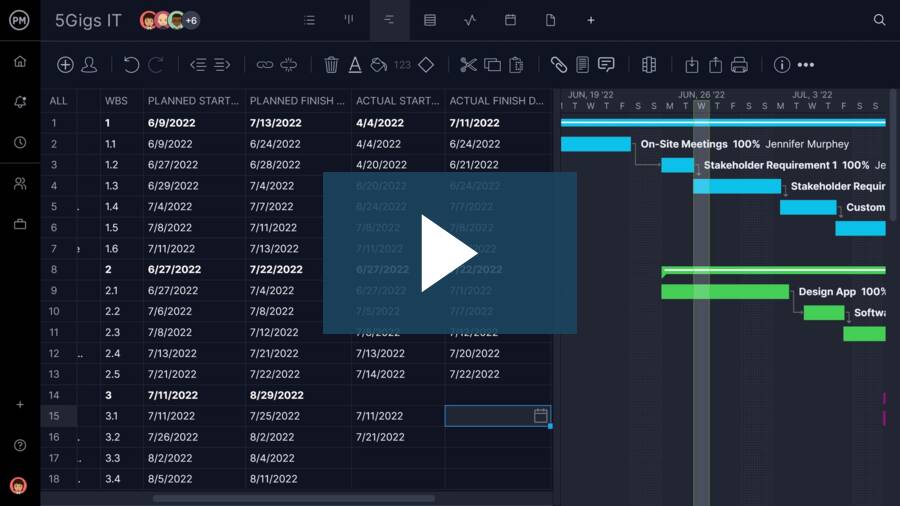Have you ever gotten stuck trying to schedule a project? If you’re like most of us, the answer is yes. It’s the project management equivalent of writer’s block, and it can majorly slow down your planning.
The good news is that there’s no shortage of methods designed for tricky scheduling situations—whether it’s a lack of information, inspiration or anything else. One such solution is the workback schedule.
What Is a Workback Schedule?
A workback schedule or a workback plan, is a method of project scheduling in which the planner begins identifying project activities, deliverables and milestones starting from its completion date, as opposed to the traditional approach of planning the project from start to finish.
This is done to ensure that project tasks are scheduled to meet the project deadline and confirm resources are sufficient for the entirety of the project by allocating them to tasks in reverse order, starting from the last task and going to the first.
This is best executed with the help of project scheduling software. ProjectManager lets you schedule projects, manage resources, collaborate on work and track progress along the way with real-time dashboards. Get started today for free.
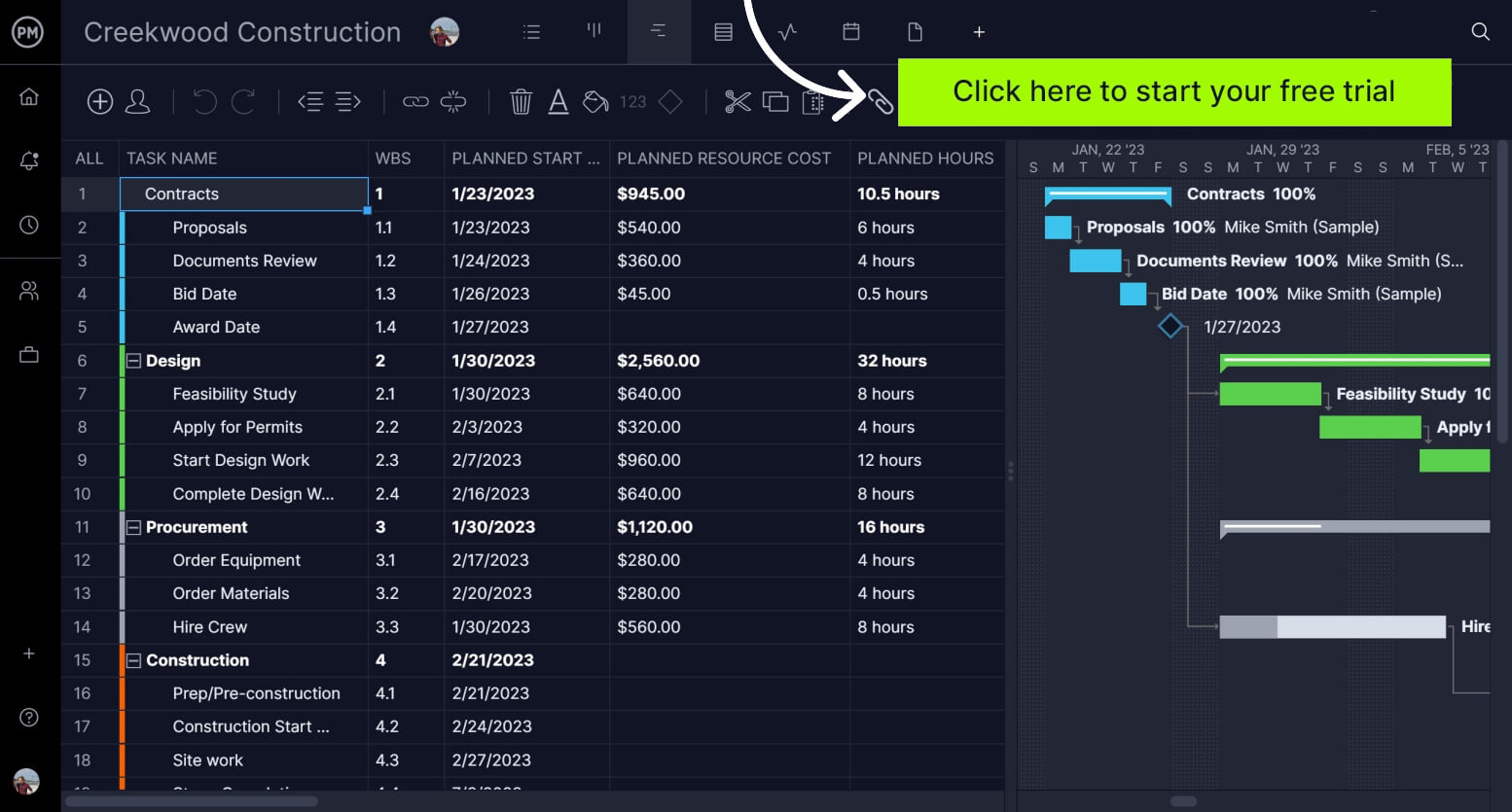
When to Use a Workback Schedule
Using a workback schedule is especially advantageous when there aren’t many specific details about the project. In fact, sometimes there are only deliverables and a due date to go by. In this case, planning from beginning to end can be a real challenge, and a workback plan is the answer.
Additionally, if the project has an immovable deadline, using a workback schedule ensures that everything is scheduled to take place within the project’s life cycle. The project is planned specifically so that it doesn’t go over schedule.
Related: Free Project Scheduling Templates
When meeting a deadline is not the most important aspect of a project, using a different method of scheduling might be more appropriate. That being said, a workback schedule can be used as often or as seldom as the project manager likes.
The Benefits of a Workback Schedule
A workback schedule operates by way of bookends: the project start date and the project due date. Between these dates, the project manager has the freedom to schedule tasks and allocate resources as they see fit—so long as these tasks are accomplished within the set timeline.
The chief benefit of using a workback schedule is the assurance that your projects won’t go past critical due dates. For many clients and teams, this is the most important thing, and the project cannot be a success if things run over. When meeting a deadline is just as important as the deliverables themselves, workback schedules make it possible to structure the entire project accordingly.
The Risks of a Workback Schedule
A workback schedule comes with its share of risks. Even the most skilled project managers have experienced the challenges of this method, and understanding these challenges can make the difference between accurate and inaccurate scheduling.
Everything looks simpler on paper. When creating a workback schedule, we’re scheduling from a due date backward and scheduling resources to tasks in reverse order. This opens the door to the possibility of not spreading resources evenly enough. For example, it’s possible to assign so many resources to the tail end of the schedule that there’s no resource availability left at the beginning. When this happens, the entire schedule needs to be adjusted.
A workback schedule can also be thrown off by “hiccups” projects face along the way. Because this type of schedule is best for projects with a firm due date, it also means the entire schedule is extremely sensitive to delays. If, for example, a task at the beginning of the project takes a week longer than anticipated, the rest of the schedule must adapt while maintaining the firm due date.
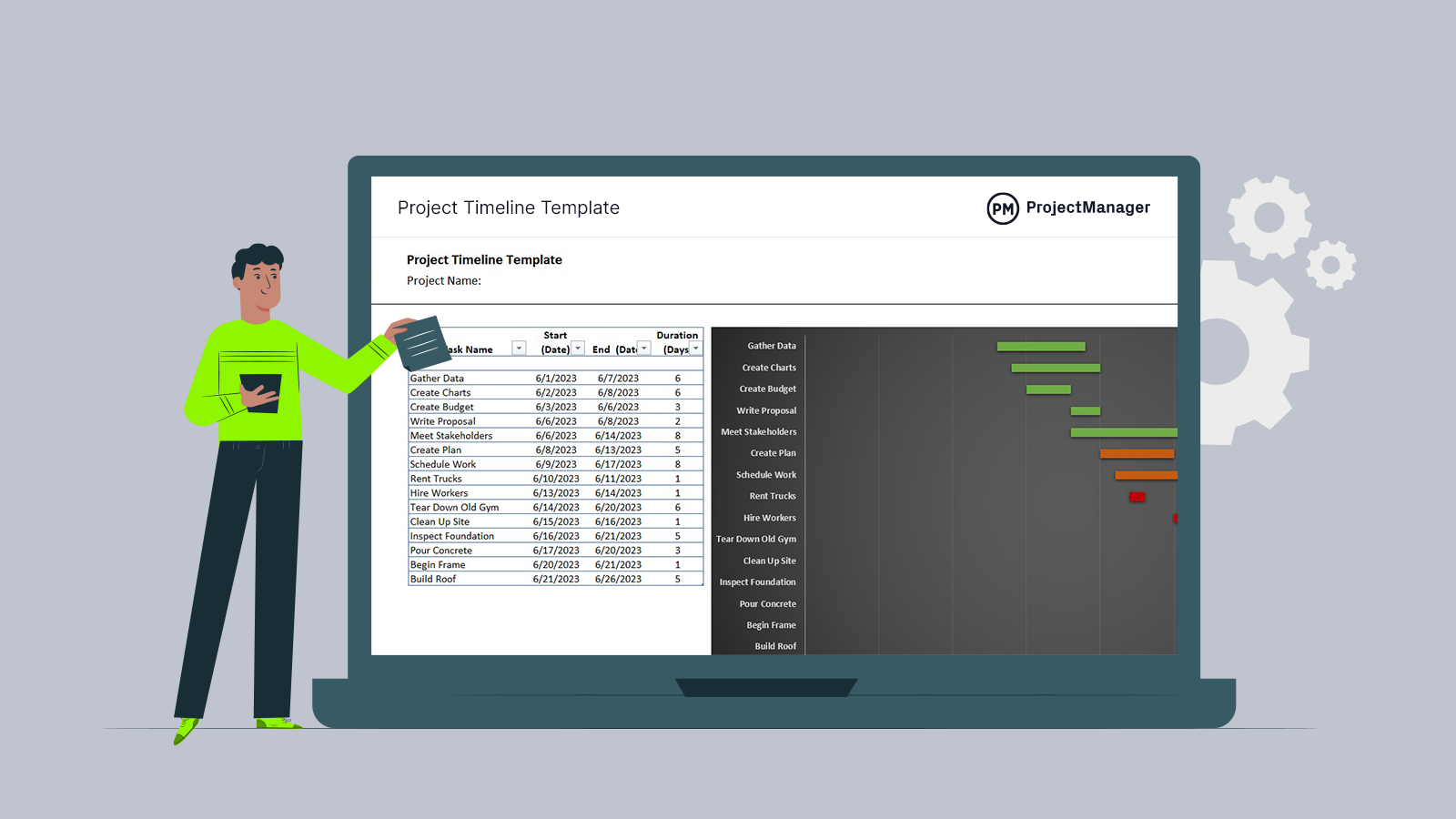
Get your free
Project Timeline Template
Use this free Project Timeline Template for Excel to manage your projects better.
How to Create a Workback Schedule
Depending on the size and scope of the project, schedules vary in complexity. That said, there are steps project managers can use to create any workback schedule. Start by completing each of these steps and flesh out your schedule from there.
1. Define Project Goals and Objectives
To start, envision the long-term project’s final goals. Identifying project goals and objectives will help determine what’s the outcome once the project is completed. This will outline the steps to get there and the deadlines for those tasks that must be met to reach the final deliverable.
2. Begin Mapping Project Milestones and Deliverables
Before breaking everything down into tasks, it’s easier to identify milestones and deliverables, from the end to the start, using the workback approach. By charting the project schedule in reverse and breaking down the larger project into smaller milestones and deliverables, one can identify potential conflicts or resource issues.
3. Use a Work Breakdown Structure to Identify Work Packages and Project Tasks
The work breakdown structure (WBS) is a helpful tool when identifying project tasks. This hierarchical chart has the final deliverable on top and then breaks that down into smaller deliverables until all project deliverables are noted. These deliverables can then be broken down into tasks and subtasks as well as work packages.
4. Set Due Dates and Dependencies
To create a workback plan, you must take the tasks from your task list and get them on the calendar. But, in what order should they come in and how close together should they be? Keep in mind that these factors may change as you go along, but the best place to dive in is setting due dates and determining which tasks are dependent on one another. With this information, putting the tasks on a workback calendar is much simpler.
5. Allocate Resources
Now that there’s a general idea of task order and dependencies, it’s time to decide which resources it will take to complete these tasks. This might include how many team members each task will require, how much money and hours of work they will take, etc. Some tasks will demand more resources than others, and allocating them task-by-task is a great way to ensure each has enough resources without “starving” other tasks. Keep in mind these resources are subject to tweaks and changes as the workback schedule continues to take shape.
6. Schedule and Assign Tasks
At this point, it’s time to plot tasks on your workback plan, with each task’s resources and dependencies in mind. Having this information on hand makes scheduling the tasks themselves much easier, as you now know the constraints and details for each. It also informs decisions about how much manpower each task requires. Some tasks may only take one team member, while others need three or four. These team members are then less available for other tasks. As with resources, tasks should be assigned as evenly as possible to prevent burnout.
Scheduling and assigning tasks is made much simpler with the help of project scheduling software. Learn more about the benefits of scheduling software in the video below.
Project Timeline Template
A Gantt chart is a classic project management scheduling tool. This free project timeline template for Excel has a spreadsheet that collects tasks and their start and due dates. That data then populates a timeline showing the entire project.
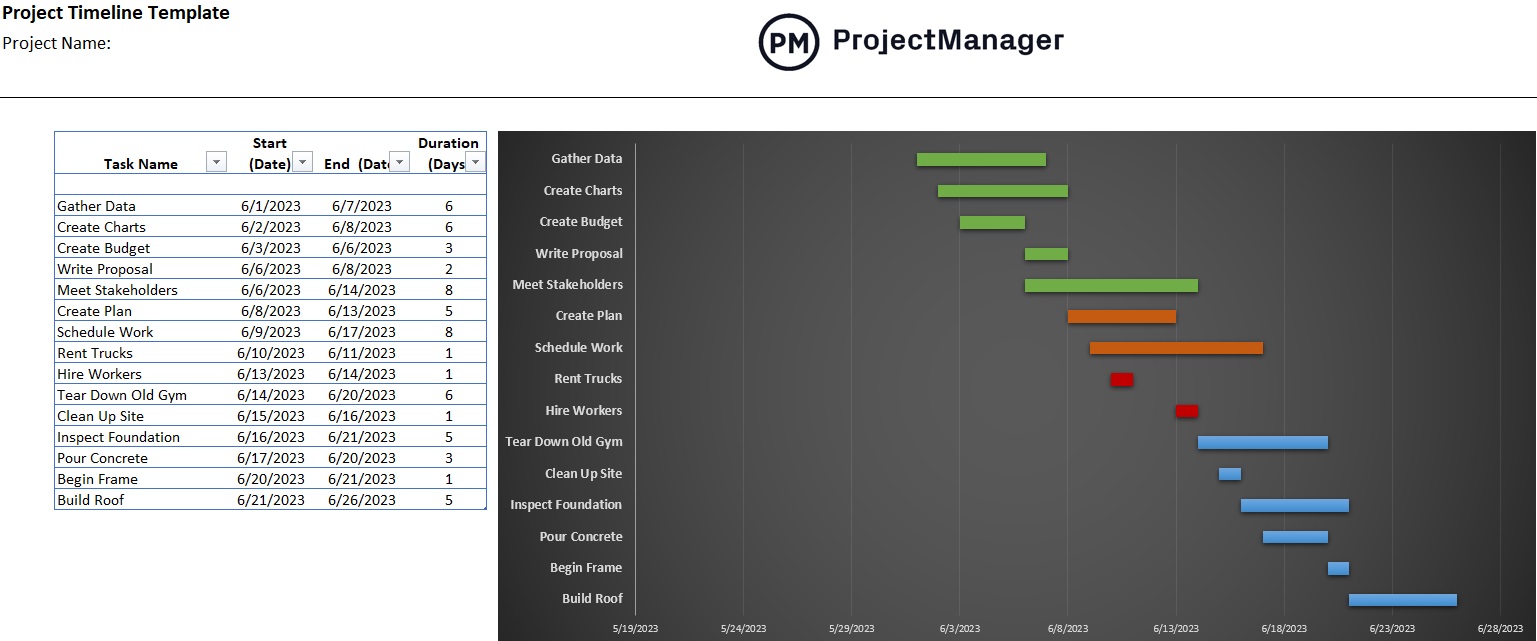
Use this work schedule template to execute the workback schedule. It helps managers prioritize tasks and balance their team’s workload, which keeps them working at capacity.
Five Essential Tips for Creating a Workback Schedule
So you understand the concept of a workback plan and how to get started. But there’s still more to learn. Creating a workback schedule is a nuanced process that often requires trial and error. That said, these five essential tips will set you on the path to success.
1. Remember Task Due Dates
Because of the emphasis on the project’s final due date, it can be easy to take task due dates for granted or not set them at all. After all, why does it matter, so long as the entire project is finished on time? This line of thinking can lead to disaster.
Creating tasks with firm trajectories and due dates is the foundation for finishing the project as a whole on track. And, if a task does run over, knowing its original due date shows exactly how to adjust upcoming tasks in order to compensate.
2. Distribute Resources Smartly
When working backward to forward, there is a risk of allocating resources too heavily at the end of the project and not leaving enough for the beginning. When this happens, the beginning of the project suffers and can present many challenges for the rest of the project.
Instead, start by breaking up resources evenly and allocate them as equally as possible. If there are remaining resources at the end of tasks, they can always be reallocated to other tasks down the road.
3. Create Contingency Plans
Consider the worst-case scenario. Things have gone awry, and there’s a risk of going past the due date. Just like that, a few failed or overdue tasks can sink the entire project. The trick to avoiding this is creating several contingency plans that react to certain things going wrong.
If X happens, then Y must as well. In a workback schedule, this means having a plan to adapt the schedule while maintaining the same due date. Imagine the start date and due date are bookends. Everything between them must be adaptable.
4. Try Different Versions of the Workback Schedule
One of the biggest mistakes a project manager can make when creating a workback schedule is treating it as if it’s set in stone. The first draft is just that, and the best project managers consider many different options before solidifying a schedule. In a workback schedule, this means spreading tasks out and allocating resources in different ways until you find the perfect solution.
Without this “play” period, it’s too easy to go with a less-than-perfect schedule. Instead, create an array of mock-ups and compare them. This process is made easy with modern scheduling tools.
5. Use Scheduling Software Tools
As we said, it’s crucial to “play” with a schedule until it is the best it can be. Unfortunately, antiquated scheduling tools make this a hassle and turn users off from creating different versions of a schedule. It’s as if users are writing in permanent marker, rather than in pencil, and this lack of creative freedom leads to easy-to-prevent mistakes.
Instead, choose a project management software with scheduling tools made for creativity and flexibility. The best tools save every change and tweak you make in the cloud, automatically so there’s no fear of losing important data while making changes. Look for features like Gantt charts, timelines and calendars to make sure you can build a robust workback plan.
Workback Schedule Example
To better understand what a workback schedule is, let’s imagine a real-life scenario. For example, what if a commercial construction company was contracted to build an office building?
Project Deadline
Building Completion: June 1, 2025
Key Project Milestones
With the final deadline defined, the general contractor will then work backward to identify milestones in the project.
- Final Inspection and Occupancy Permit: May 15, 2026
- Interior Finishing Complete: April 30, 2026
- Electrical and Plumbing Installations Complete: March 31, 2026
- HVAC System Installation Complete: February 28, 2026
- Structural Framing Complete: January 15, 2026
- Foundation Complete: November 15, 2025
- Site Preparation and Excavation Complete: October 1, 2025
- Permits and Approvals Secured: August 15, 2025
- Design and Planning Complete: July 1, 2025
Project Work Breakdown
Project Milestone: Final inspection and occupancy permit
- Project Tasks:
- Schedule final inspection: May 1, 2026
- Address any inspection issues: May 5, 2026 – May 10, 2026
- Apply for occupancy permit: May 12, 2026
Project Milestone: Interior finishing complete
- Project Tasks:
- Install flooring, painting, and ceilings: April 1, 2026 – April 25, 2026
- Install fixtures and furnishings: April 10, 2026 – April 30, 2026
- Final walkthrough for finishing: April 28, 2026
Project Milestone: Electrical and plumbing installations complete
- Project Tasks:
- Install electrical wiring: March 1, 2026 – March 15, 2026
- Install plumbing fixtures: March 10, 2026 – March 25, 2026
- Electrical and plumbing inspections: March 20, 2026 – March 31, 2026
Project Milestone: HVAC System Installation Complete
- Project Tasks:
- Install ductwork and vents: February 1, 2026 – February 15, 2026
- Install HVAC units: February 10, 2026 – February 20, 2026
- HVAC system testing: February 22, 2026 – February 28, 2026
Project Milestone: Structural Framing Complete
- Project Tasks:
- Erect steel framework: December 1, 2025 – December 20, 2025
- Install floors and walls: December 10, 2025 – January 10, 2026
- Structural integrity inspection: January 12, 2026 – January 15, 2026
Project Milestone: Foundation Complete
- Project Tasks:
- Pour concrete foundation: October 15, 2025 – October 30, 2025
- Foundation curing: October 31, 2025 – November 10, 2025
- Inspect foundation: November 12, 2025
Project Milestone: Site preparation and excavation complete
- Project Tasks:
- Clear site: September 1, 2025 – September 10, 2025
- Excavate site: September 11, 2025 – September 20, 2025
- Grade and level the site: September 21, 2025 – September 30, 2025
Project Milestone: Permits and approvals secured
- Project Tasks:
- Submit construction permits: July 1, 2025 – July 15, 2025
- Obtain zoning approvals: July 10, 2025 – July 20, 2025
- Finalize and secure all necessary permits: July 25, 2025 – August 15, 2025
Project Milestone: Design and planning complete
- Project Tasks:
- Finalize architectural designs: June 1, 2025 – June 15, 2025
- Finalize structural engineering plans: June 5, 2025 – June 20, 2025
- Review and approve final plans: June 25, 2025 – July 1, 2025
More Free Project Scheduling Templates
While project management software is more efficient and effective than templates, not everyone is ready to upgrade. To those people, we offer over 100 free project management templates for Excel and Word that cover every phase of managing a project across multiple industries. Here are a few free scheduling templates.
Work Schedule Template
Another tool that helps with workback scheduling is having a work schedule. A work schedule is a list of the project team, where they’re working, at what time and their responsibilities. This free work schedule template keeps teams productive.
Critical Path Template
The critical path is the longest sequence of tasks that must be completed to deliver a project. Use this free critical path template for Excel to plot the critical path, which is especially useful for complicated projects.
PERT Chart Template
Another scheduling tool is a PERT chart, which is used to organize and coordinate project tasks. Use this free PERT chart template for Excel to break down tasks and identify task connections and risks.
How ProjectManager Makes Project Scheduling Easy
ProjectManager is the software that you need to accommodate any method of scheduling. As you begin to work backward, use the task list to create tasks and assign team members, make comments, attach documents, set priority, create to-do lists and more. Having all this information at your fingertips makes it easier to determine where to plot tasks on the workback plan.
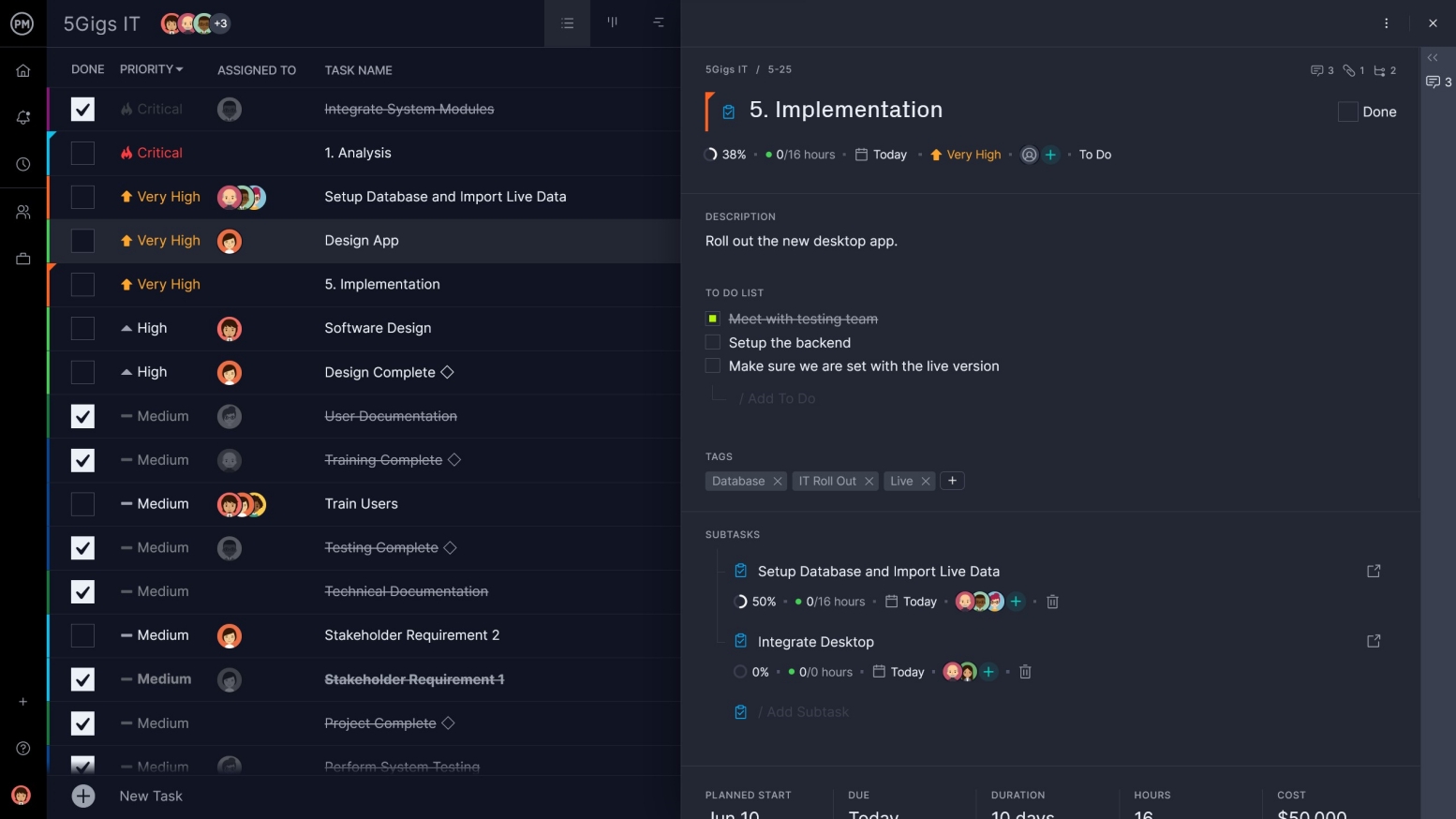
Build Dynamic Timelines in Multiple Views
When you’re happy with your tasks, use a variety of scheduling tools to begin working back. Don’t get pigeon-holed by only one scheduling tool. Instead, choose from the Gantt chart, calendar view and kanban board to construct your schedule your way.
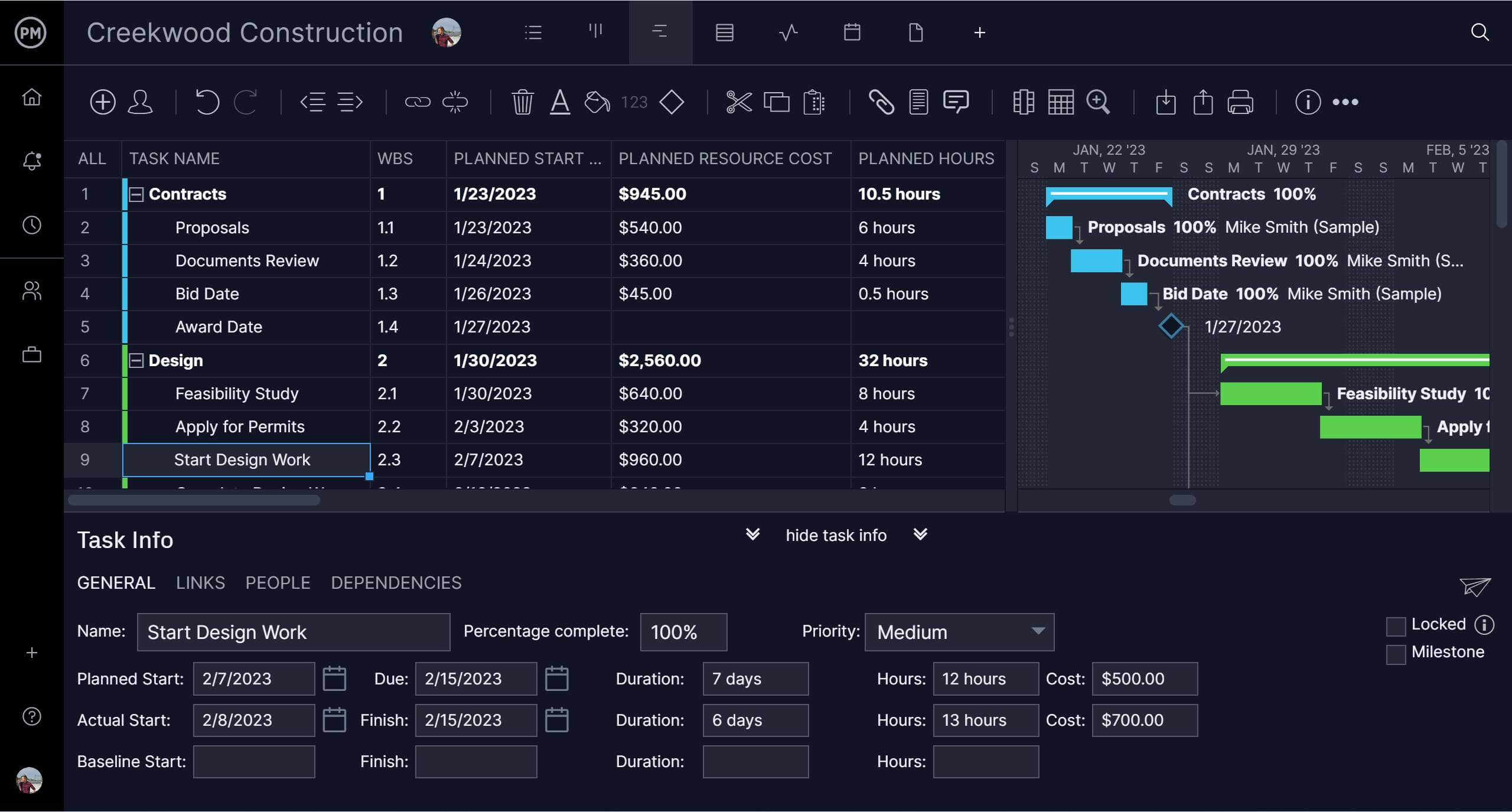
ProjectManager is an award-winning tool that helps you create workback schedules and gives you the tools needed to keep it on track. From compiling a list of your tasks to placing them on a Gantt chart, you have total control over all your work. Organize tasks, assign resources and monitor it all in real time by trying ProjectManager free for 30 days.

